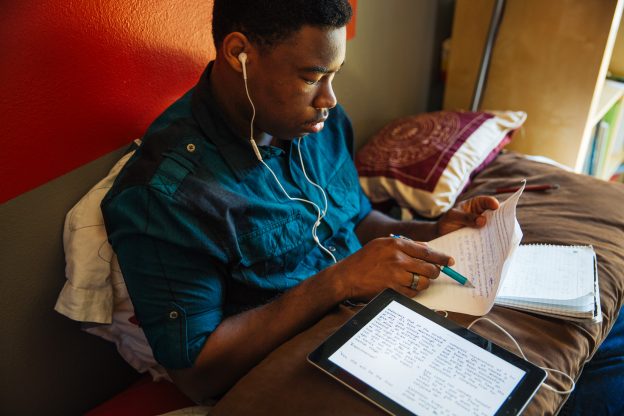By Michelle Swanson, an educator and national educational specialist from Eugene, OR
While education leaders and classroom teachers have discussed the growing issue of the Digital Divide for years, its severity has become painfully clear as classrooms have been forced online during school closures. The results of distance learning show low levels of engagement and progress for students from homes lacking internet access and devices. In addition, students facing the digital gap tend to have fewer books at home and live in communities struggling to keep libraries open. The pandemic has brought these serious equity issues to the forefront.
Closing the technology divide by ensuring that every student has a personal learning device and reliable internet access at home is a critical first step. Districts looking for guidance on 1:1 initiatives should look to ISTE’s definition of equitable technology access that makes up one of their “essential conditions” for supporting all learners.
Once students have a computer and WiFi, school leaders can look to the Internet Archive’s digital collections as one part of a multi-pronged strategy to address learner equity. Specifically, these online resources can be used to target issues of resource access, instructional rigor, and special needs access.
Resource Access Considerations
- Book and Library Access
By supplementing their onsite collections with online access to the Internet Archive’s Open Library, schools can extend a wealth of resources to all learners in a digital learning space that is open 24/7. Books can either be borrowed for one hour or two weeks, depending on availability.
- Diverse Resource Access
Open Library offers diverse reading materials to represent its readers. It includes books from the curated #1000 Black Girl Books list created by Marley Dias, a young girl determined to find books with main characters that looked like her. The collection includes books for younger readers like Karen Katz’ The Colors of Us and Chris Cleave’s Little Bee for older students.
Instructional Rigor Considerations
- Standards-Aligned Books
Providing rigorous instruction is an important equity strategy. To support high quality teaching and learning, the Internet Archive collections include texts suggested by the Common Core framework. For example, beginning readers can borrow books for reading aloud like Pat Mora’s Tomas and the Library Lady, while middle schoolers can explore Mildred Taylor’s Roll of Thunder, Hear My Cry and high schoolers can tackle In the Time of Butterflies by Julia Alvarez.
- Grade-Level Appropriate Books
The Internet Archive’s digital libraries include grade-level appropriate collections that teachers can use to ensure that all students are appropriately challenged with complex and quality texts.
Special Needs Access
- Read Aloud and Print Disabled Books
For students who need or prefer to listen to and visualize the plot of a story, Open Library provides a read aloud option. When viewing a borrowed book online, students can click on the audio speaker icon and choose their preferred reading speed. For those who are visually impaired and have special software, print disabled books have been formatted through DAISY. These tools can support school efforts to employ a Universal Design for Learning approach.
- Print Disabled Collection
To make access to print disabled books across the collection even easier to find, the Internet Archive has curated a Books for People with Print Disabilities section. Over 1.5M books are accessible through this page and cover the wide range of topics available in the broader library from History and Science to Children’s literature.
Working toward educational equity should be core to the mission of every school. By supporting resource access, instructional rigor, and special needs access, tools like the Internet Archive’s digital libraries can help schools move toward this essential goal.

That is amazing! What age do we live in! Praise be to God.
Yes indeed it is a Tool for Student Equity.